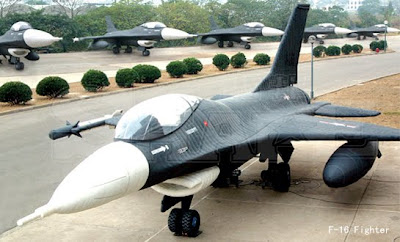One way that you can frustrate the desires of your enemy in war is to deceive and confuse him.
Decoy versions of military equipment like trucks, tanks and planes can effectively deceive the enemy, help to reduce damage to the commander's real equipment, reduce casualties, and waste enemy resources of time, men, and materials. Unlike more traditional types of camouflage, the purpose is not to hide assets from the enemy but to divert the enemy from the actual forces and equipment, which can be a proactive strategy for defense or a way to gain the initiative. This idea was used extensively in WWII. The British used it in the North African Campaign, using rubber tanks to confuse Rommel's recon planes. In the lead up to D-Day, an entire strategic plan of deception was used, called Operation Fortitude. It involved double agents, false radio traffic, phantom divisions (including their shoulder patches) and of course, rubber inflatable decoys of tanks and trucks.


This idea has continued to be useful into the modern era of the Cold War and beyond. The technology has continued to advance and modern decoys are multi-spectral and can even fool some satellite and aerial reconnaissance. They can achieve this through systems that mimic the IR signature of the real vehicle. They are designed to have the same shape, size, radar reflection and infrared signature as a real tank, truck, or plane.One way to do this that has been discussed is simply putting a microwave within the decoy to give it warmth and a radiation signature. while any of these decoys would have a certain rate of failure, the basic concept is very good. No less a strategist than the great Sun Tzu recommends using deception as much as possible to put your enemies off balance.
Another thing to keep in mind with the use of decoys and deception is that it does not have to work perfectly to be effective. Even if only half of the enemy scouts, intelligence personnel, and senior leaders believe something, it can slow down their response times, lead to conflicting orders, or any other thing that will hamper and confuse a military force.while deception may not be able to turn the tide of a battle or war by itself very often, every little but helps and the low cost and relative ease of deception operations can be very effective from a cost/benefit point of view. The US Army has decoys of the M1 tank that can be set up in minutes and can be carried in a duffel bag. Sometimes they are carried with the tank formations themselves, not to distract the enemy but to inflate the number of tanks he thinks he is facing.
There is a word in Russian that refers to military deception, camouflage and concealment. It is maskirovka (literally: camouflage, concealment). We in the west do not generally borrow words from Russian, probably because they are hard to say, but this is a good one. The Russian and the Soviet military before them were masters of military deception. Want some proof? Look at some of the pics below. Another use of decoys is just to waste enemy resources. Recon aircraft or satellite operators need time to do their work, and even a few wasted minutes can make a difference. The Russian SAM decoys below are made to force enemies to expend valuable ordinance on them, while hiding the real ones for use later. All in all, pretty clever stuff.






Nice post, decoys are a fascinating subject and one which with all our air superiority have neglected
ReplyDeletehttp://www.thinkdefence.co.uk/2009/12/the-art-of-deception/
Interesting post.
ReplyDeleteI seem to recall that a couple of years back there was a story about the fact that during the early days of the nuclear arms race, the Soviet union used fake nuclear missiles even in their military parades, to fool the west into believing that they were further ahead than they were and possessed larger quantities of warheads. Allegedly this worked, at least initially, and accelerated the pace of the arms race.